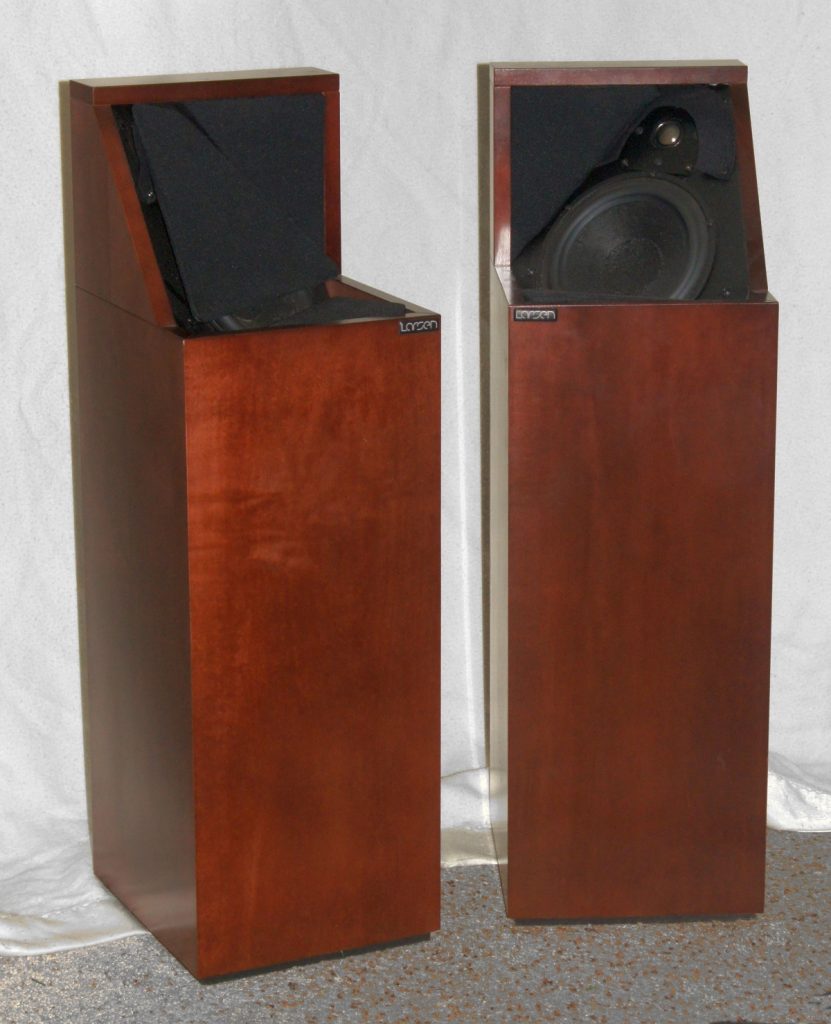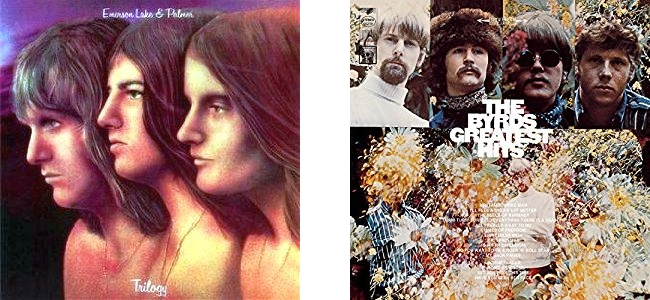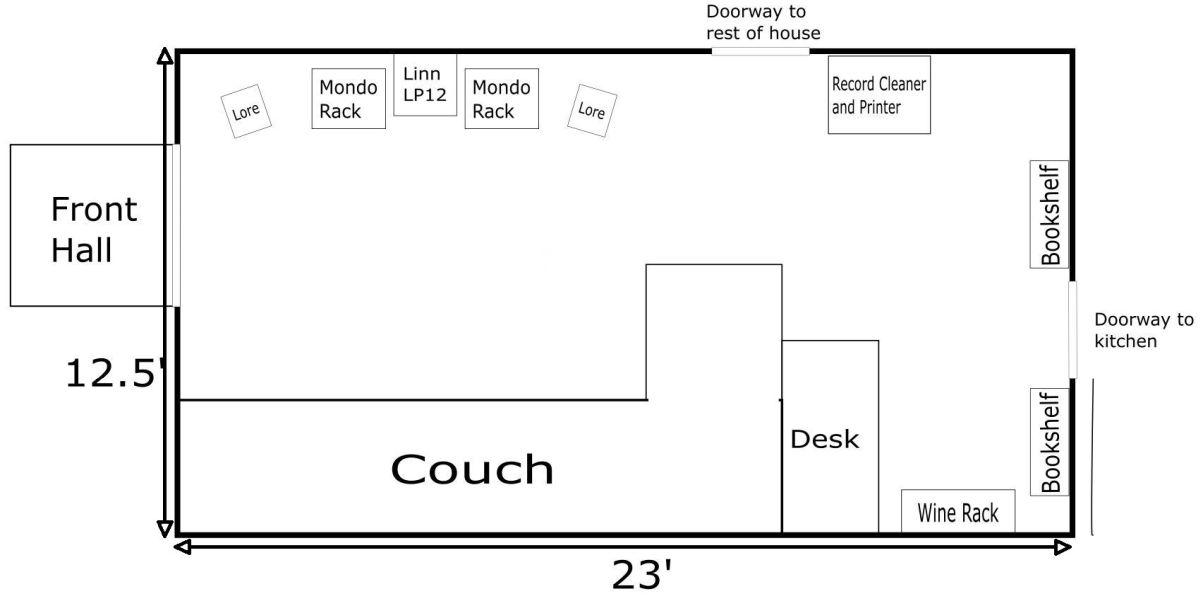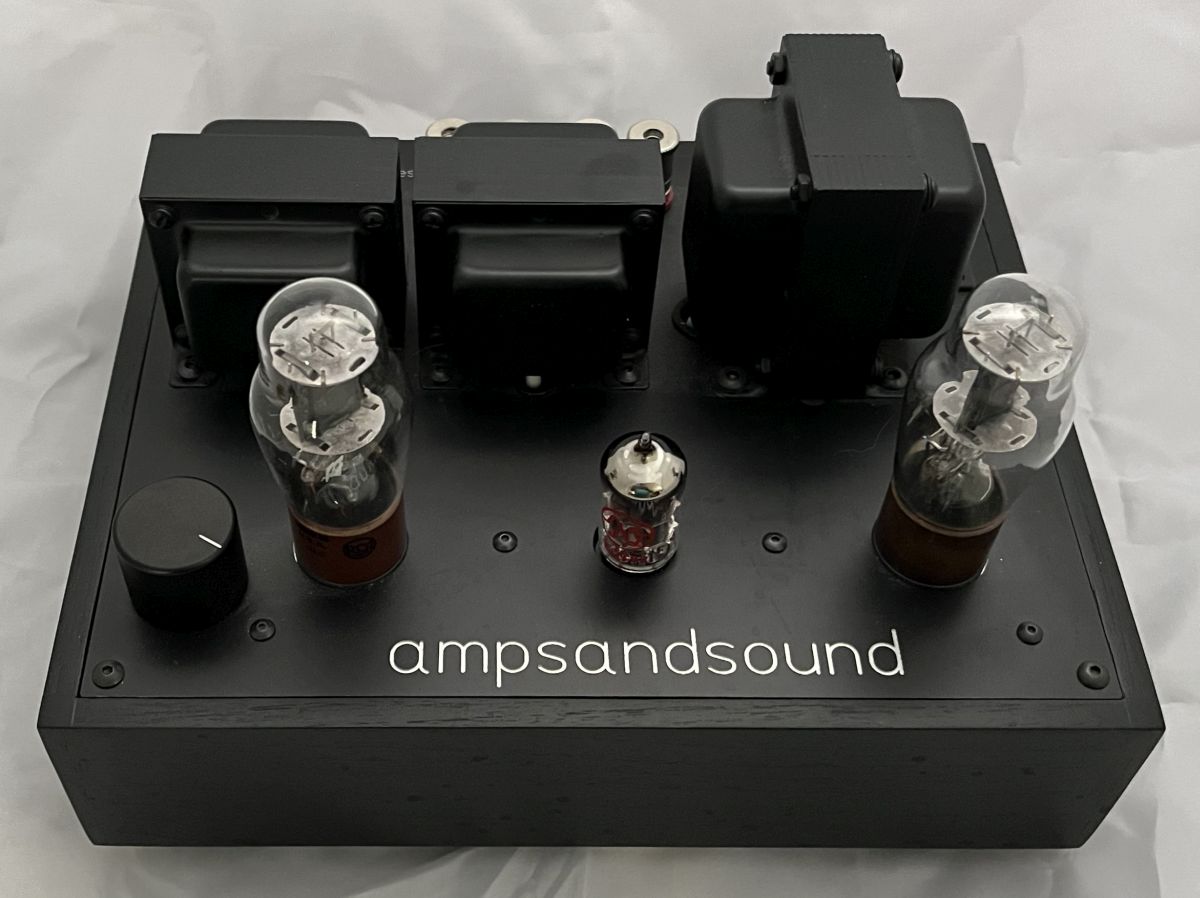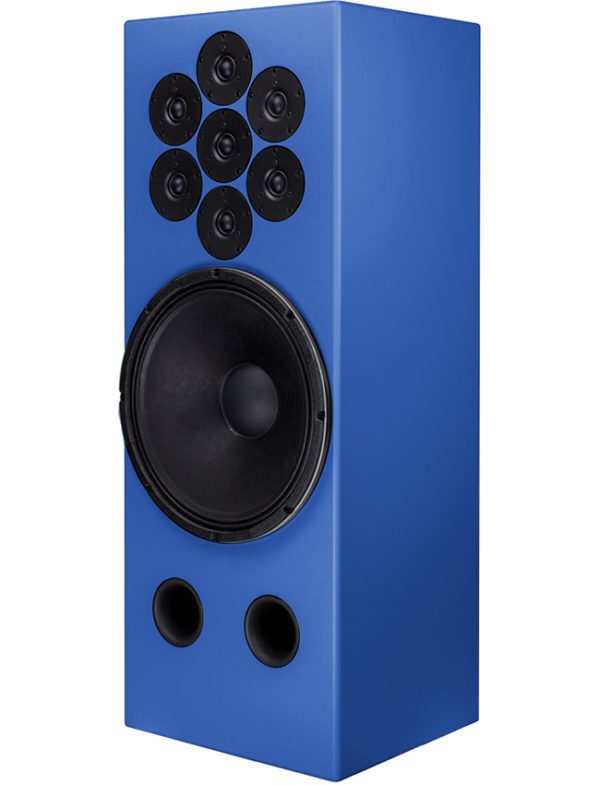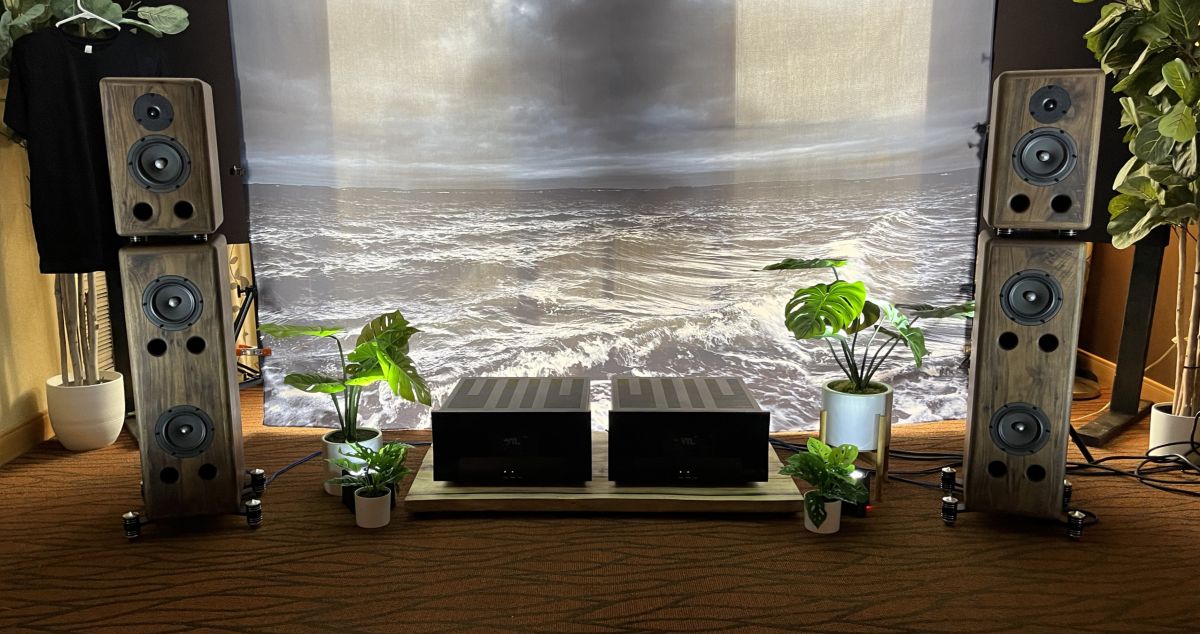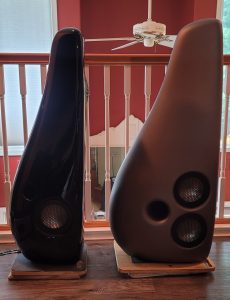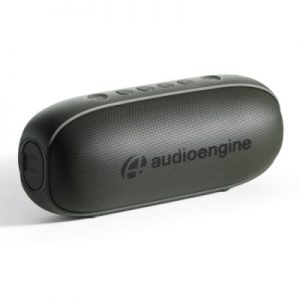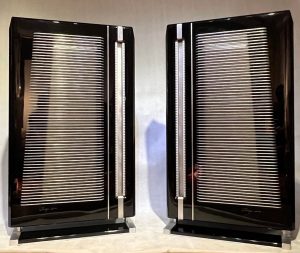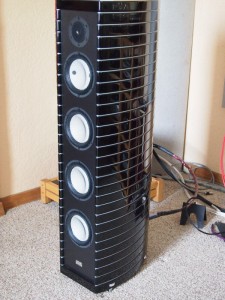I've been doing this for a long time, playing with audio gear since early 1970s. But it was heading to Rochester, NY for college in 1975 where I was finally in a city with several high quality audio shops and people I could hang out with who owned nice (dare I say high-end) audio systems. It was there that the obsession, my life long pursuit of better sound was formed. It was also, for some reason unknown to me, where my interest in designs that were a little different began. I've always had an interest, and have been drawn to, stereo gear that was a little out of the mainstream.
It was in Rochester during my college years, where I first saw Sonab speakers. These odd looking, squat, multi-driver speakers with tweeters facing in all different directions, seemed, well, just plainly odd. But then, when the music started playing, odd was replaced with music, and darn nice sounding music, too. I have fond memories of the times I stopped by that dealership to listen to the Sonab speakers, and have on occasion searched eBay thinking maybe a good deal might be found on a set.
However, then the realization would set in that I don't want old, vintage gear that will eventually need hard (or impossible) to find replacement parts. I spent way too much time and money during my son's college years replacing hard to find tweeters in his vintage Large Advents, and getting his 1970s vintage Luxman amp repaired.
No, only new, current designs for me from now on.
And all that brings us to the Larsen line of speakers, and the Larsen 6 specifically.
Over the last several years, at CES and the old Newport Show, I have been extremely impressed by Larsen speakers I've heard, often listing them among the best sounding rooms in my show reports. Only reason I hadn't looked for reviewing them was that their price was outside the range I had been targeting, and I wasn't sure how well they would fit into my room. But after describing them to my wife (and showing her pictures from a show report), she liked their relatively small size and up against the wall placement. With the Larsen 6 being just a little above my top price limit, and having some very nice and (hopefully) compatible amps in house, it seemed like a good time to request a pair.
Larsen's model 8 and 4 have already been reviewed in Positive Feedback (HERE and HERE) and those reviews have a lot of background information on Larsen (and their connection to the aforementioned Sonab), so I won't duplicate that here. Instead I'll get right into the Larsen 6 and how it worked in my system.
At first glance, the Larsen 6 is one of the most unassuming speakers you'll ever have in your system. They are quite small in all dimensions for a floor-standing speaker, measuring just 30"H x 9"W x 10"D, and weighing all of 28 pounds. They use the same 7-inch mid/bass driver and tweeter as the more expensive Larsen 8, and for such a small speaker are surprisingly specified to reach down to 26Hz. They are rated at a fairly average 88dB sensitivity (assumed to be based on standard specifications). They can be had in nicely finished in natural wood (choices of cherry or maple) or in white or black lacquer.
My review pair was a well-used set that had many hours of use at shows and with other reviewers, so no extra break in time was needed. I moved my Tekton Lores out of the room and moved a few things around (floor lamps and the power line conditioner) to give them, their preferred up-against-the-wall space. I also had a feeling my 15-wpc Antique Sound Labs MG-SI15DT-S KT88 amplifier might not be the best choice, so I swapped out to do initial listening with the Burson Timekeeper Virtuoso (100-wpc, solid-state) amp. Over the review period, I also used the Heed Elixir integrated amp and briefly my son's 1970s Luxman L80V integrated amplifier. I also brought the speakers to long time friend of Positive Feedback, Russ Stratton's house for a while, to hear how well they would do in a room about three times the size of mine. More on that later.
Otherwise, all listening was done with the gear listed in my system page (click on my name at the top of this article), split between LP and digital files. I also used the Larsens quite a bit for TV and movies, playing the Toslink output of the DirecTV receiver into the optical input of the Burson Conductor Virtuoso preamp/DAC/headphone amplifier.
A few minor, but persistent, biases and expectations need to be addressed before describing my experiences with the speakers. Mostly related to their size and basic design, or their up-against-the-wall placement.
First, when people (me included) see a small two-way speaker, especially with a relatively small (in this case a 7 inch driver), there are expectations that bass will be restricted, limited or otherwise inferior. So we will look carefully at the bass response of these speakers. I had to remind myself of the deep, powerful bass I have gotten out of other smallish two-way systems in past (like the Reynaud Evoution-3, the NEAT Elite, or the Direct Acoustics Silent Speaker).
Secondly, when audiophiles see speakers near the wall, for many it is assumed that imaging and sound staging will be poorly represented. I will say that the imaging characteristics of the Larsen is different from speakers designed to be placed far from a wall, but that difference, whether better, worse, or merely different, is open to interpretation.
I lived with the Larsen 6 for several months. Most of my evaluation listening came from regular, day-to-day sessions, picking LPs or files just for the pure enjoyment of the music. Much of it was listening with the server set to shuffle, to make sure I had a wide variety of genres, styles and recording quality. I very quickly came to appreciate the beautiful overall tonal balance of the speaker. I couldn't really, describe these as bright or dark, or warm or cold any of those types of terms. Instruments actually sounded tonally correct. Whether the big, bold powerful sound of Greg Lake's Gibson J-200 acoustic on ELP's Trilogy (both an early LP from my high school days and a FLAC rip from the CD), or the jangly overly compressed 12-string Rickenbacker Roger McGuin played on those early Byrds' tracks (Byrds Greatest Hits, DSD download) both as different as they were, sounded remarkably correct whether I knew what they should have sounded like or not.
This natural tonal balance extended to all aspects of music I listened to. Playing six Jack Johnson albums shuffled on my server, I found myself just chilling to the music, and not really paying attention to the gear or the sound (a big complement from my point of view). It all just sounded right. Johnson's albums are beautifully recorded (showing tasteful and proper use of compression) and when a system gets all the basics right, it is easy to spend hours just kickin' back and enjoying the tunes.
Moving to some more challenging music, listening to some of my favorite late 60s / early 70 prog rock albums (mostly original LP or more recent high resolution FLAC or DSD files) gave the Larsens a tougher workout, but nothing they couldn't handle beautifully. Playing my 45-year-old LP of King Crimson's Larks Tongues in Aspic, the power of depth of the bass line in "Easy Money" really surprised me. It was deep, powerful and with plenty of necessary impact, showing no need for any sub woofer or other enhancements. Likewise on Genesis' Selling England By The Pound (Classic Records 180 gram LP reissue, and DSD files from the SACD reissue), Mike Rutherford's bass guitar and pedals had fantastic tone, depth and power, especially on tracks "Firth of Fifth" or "The Cinema Show."
On to something more modern, Lorde's album Pure Heroine, on both the LP and the 24/48 download, the bass lines literally shook things on shelves in the room on the track "Royals." What struck me even more, was how effortless the soaring vocal track was, and how it just played into the room with no sense of strain or difficulty (another case of proper and tasteful use of compression).
And that bring us to a discussion of the imaging and sound staging characteristics of the Larsen speakers. I'll start by saying, much like the Direct Acoustics Silent Speakers I used for several years, and that now reside happily in my son's system, either you will really like the way these speakers image, or you won't. I'm certainly on the side of like, in fact loving, they way these speakers cast out a huge, wall to wall soundstage, and fill it with very realistic, and non-specific images. Don't get me wrong, I have come to appreciate the accurate and specific imaging of speakers that can do it, but I still don't necessarily find it to be either adding to the realism of the music or necessary to my enjoyment of listening. The Larsens fill the room, making it nearly impossible to tell where the speakers are, and honestly, you realize you don't really care. This isn't about the speakers or the amps or cables or how many bits there are or whether 180 gram sounds better than 140 gram. This is being immersed in a roomful of your favorite music and focusing on that. That's what the Larsen 6 brings to your system.
These do some things way better than I had expected. Again, my biases and expectations made me concerned about the tweeter being so close to the wall, and whether there would be either some brightness, or some directional issues, or maybe some loss of detail or airiness. Well, the answer turned out to be that I should stop worrying and just listen. It was actually surprising to me how well high frequencies were reproduced. I especially like well-recorded percussion; especially cymbals, triangles, and other metallic high frequency had just the right amount of bite and sheen and just properly pierced through the rest of the music to find its proper place in the mix. Maybe I focus on this, as, when I was younger, drums were the only instrument I had any talent at playing. I spent hours at a time in the basement practicing and the sound of the hi-hat and the various cymbals and how each type of drum stick made them sound different, has stuck in my mind even though I haven't sat a kit in forty years.
At one point, I brought the Larsens and the Burson Timekeeper amplifier to a friend's house to hear they would do in a much larger room (three to four times the total volume of mine). I had to bring the amplifier as hi primary amplifier a the time was a single-ended tube amp that put out maybe 3 or 4 watts. Fine with his custom Zu speakers, but not appropriate for the Larsens. Well, after a ten or fifteen minutes to get the distance between them dialed in (slightly closer than an equilateral triangle), I was really kind of shocked at how well they worked in this room. Without exaggerating the size of images, the speakers still managed to fill this room with wall-to-wall sound, and still didn't alter tonal balance or lose anything. Maybe they didn't express themselves quite as dynamically as Russ's Zu speakers, but then again, rarely have I heard a speaker that can outdo those from that standpoint.
They certainly proved that they could handle various rooms easily, as long as they can set in their near-wall location. And, when I say "near wall" I mean really up against the wall. I set them as close as the cables I used would allow. They always sounded their best that way.
I have a few final points to bring up here. In addition to all the sound qualities that make these speakers so enjoyable, the fact that they are both small and go up against the wall is really a significant issue. We joke about WAF with audio gear, and as sexist and demeaning as some might try to make that, it is a real thing. Maybe SAS (spouse acceptance factor) or SOAF (significant other acceptance factor) would be a better term, as the other person might just as easily be a wife, husband, boyfriend, girlfriend or anyone, however they describe themselves that you share your life and living space with. If the other person isn't as into audio as you are, and if you aren't setting up in a separate dedicated room, then things like "will the other person let me have these in our room and set them up as they need, regardless of how they look or where they go" become very important. My wife isn't really into this, and for the past seven years our living room has also been my listening room. In twenty years of putting up with this, these are only the third set of speakers she has fallen in love with and asked about buying. She loved how they sounded with her favorite music, but also loved how they looked and where they went. It was only when I told her the price that she changed her mind.
My brother runs a vintage system in the family room at his house (original Advents, Marantz 2030B receiver, though a more modern Pro-Ject turntable). His wife loves music, and plays flute on a small combo, but would not be happy with large speakers that have to be out in the room away from the walls or that look out of place in the room. If and when he decides to retire the Advents and get something new, these are what I would recommend to him. They would love them, and for all the right reasons.
And that brings us to the last consideration; price. At $3995 for the pair, these are actually the most expensive speaker I have ever reviewed. So I have to look at value, too. Do I feel these are worth the price? I can't speak for anyone else in this regard, but if you are already looking in or around this price range for speakers you should give the listen if you can. If you need a speaker than can both sound great and fit into your room, and think being up against the wall might be a good option for you, then you have to hear these speakers. Mind you, I loved their sound as it was, with their positioning being a nice bonus, but not a necessity for me. But if you need that, there aren't a lot of options. The market for speakers around the $4000 mark has a lot of good options, so one must know their priorities and find what suits your needs. I think these are a wonderful speaker and could happily live with them.
Larsen 6 Loudspeakers
Retail: $3995/pair
- Crossover frequency: 2.5kHz
- Sensitivity: 88dB
- Impedance: 8 Ohm
- Weight: 12,5 kg/ 28 lbs
- Dimensions: (H x W x D): 30 x 9 x 10 inches
US distributor
Audio Skies




